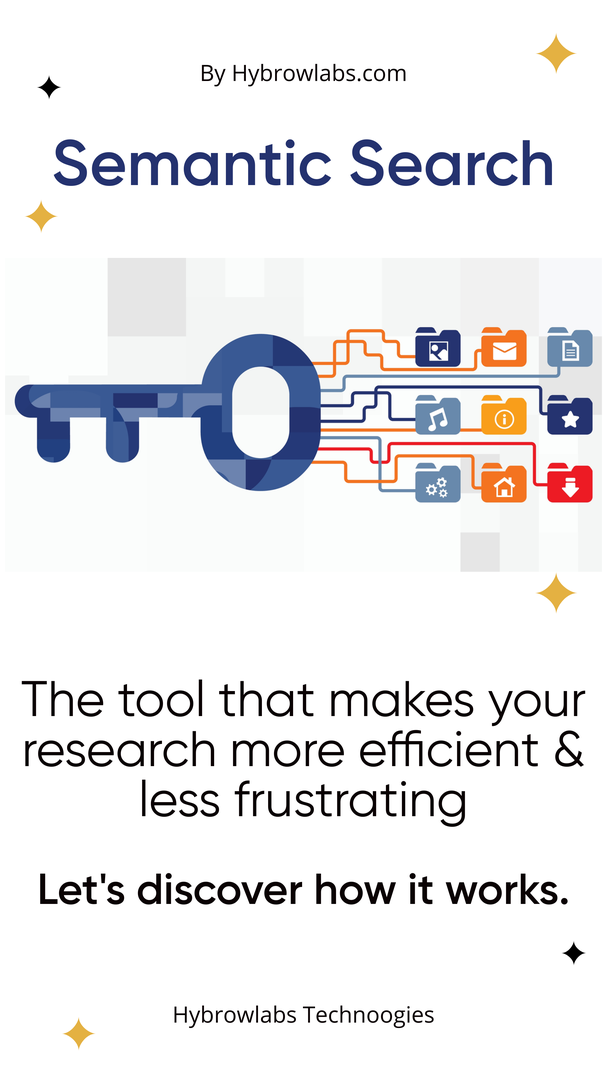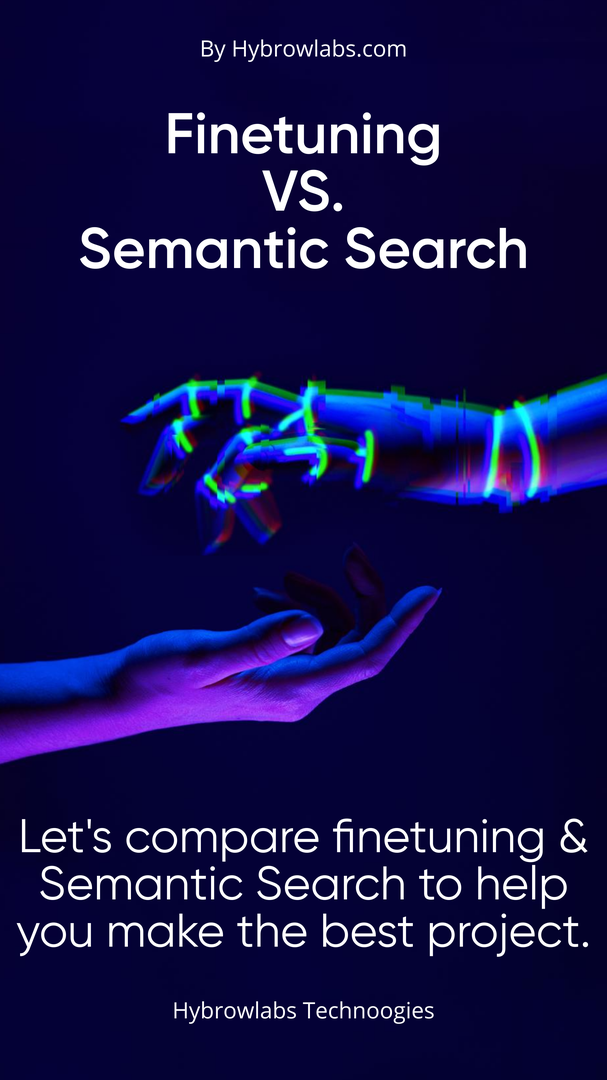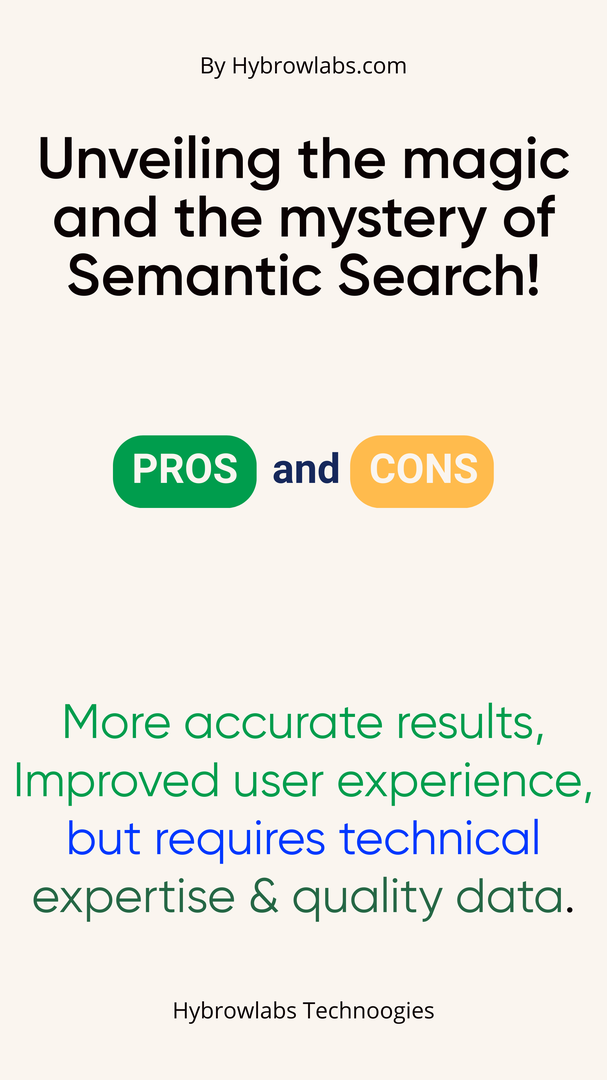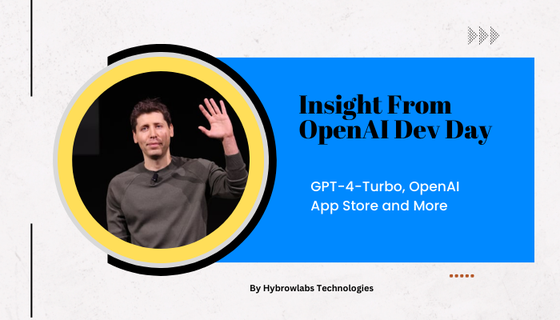
Are you tired of spending hours on end scouring through countless web pages for relevant information? Well, you're not alone. With the vast amount of information available online, it can be a daunting task to find what you're looking for quickly & efficiently. But fear not, as there are tools out there that can make your life a whole lot easier.
In recent years, there have been two tools that have emerged as game-changers in the world of information retrieval: Finetuning & Semantic Search. But how do you decide which tool is right for you? In this blog post, we'll explore the pros & cons of both Finetuning & Semantic Search & provide you with the information you need to make an informed decision. So sit back, grab a cup of coffee & let's dive in!
GPT-3 Finetuning:

GPT-3 is one of the most powerful natural language processing models out there, but what if you could take it even further? Enter GPT-3 finetuning - a technique that allows you to customize the model to fit your specific needs. Want to learn more? Check out our guide to GPT-3 finetuning and unlock the full potential of this impressive AI model!
The best part? You don't need to be an AI expert to try finetuning - there are plenty of pre-built tools & resources available to help you get started. So if you're looking to take your natural language processing game to the next level, finetuning GPT-3 might just be the ticket.
Semantic Search: The Key to Efficient Research:

If you've ever found yourself sifting through pages & pages of search results to find the information you're really looking for, you know how frustrating & time-consuming research can be. That's where semantic search comes in.
Semantic search is a search technique that uses natural language processing & machine learning to understand the intent & meaning behind a search query, rather than just matching keywords. This allows it to return more accurate & relevant results, even if the exact search terms aren't present in the content.
The result? Faster, more efficient research, that can save you time & frustration. Want to learn more about how semantic search works & how you can use it to supercharge your research process? Check out this guide!
Breaking the Biggest Misconceptions About GPT-3 Finetuning:
There are several misconceptions about GPT-3 Finetuning that can prevent people from taking advantage of its full potential. Here are a few of the biggest ones:
- Finetuning is too complicated for non-experts to attempt. This is a common misconception, but the truth is that finetuning can be done by anyone with basic coding knowledge & a willingness to learn.
- Finetuning always leads to poor results. While it's true that not all finetuning attempts will be successful, the idea that it always leads to poor results is a misconception. With the right approach & data, finetuning can significantly improve the performance of GPT-3.
- Finetuning requires large amounts of data. While having a large dataset can certainly help with finetuning, it's not always necessary. In some cases, even a small amount of high-quality data can lead to significant improvements in performance.
- Finetuning is only useful for specific tasks. This is not true either - finetuning can be used for a wide range of tasks, from language translation to text generation to question-answering & more.
Confabulation & Hallucination: Navigating the Risks of Finetuning:

Finetuning is a powerful tool that can be used to customize GPT-3 to fit specific needs. However, there are some risks associated with finetuning that users should be aware of - namely, the risks of confabulation & hallucination.
Confabulation:
Confabulation refers to the phenomenon of GPT-3 generating plausible but incorrect information based on patterns it has learned from training data. This can happen when the finetuning process is not properly designed or the training data is not sufficiently representative of the intended task. In some cases, this can lead to misleading or incorrect information being generated by GPT-3, which can be harmful in certain contexts.
Hallucination:
Hallucination, on the other hand, occurs when GPT-3 generates entirely new information that is not supported by the training data. This can happen when the model is overfitting to the training data, or when the finetuning process is not carefully controlled. In extreme cases, hallucination can lead to the generation of false or misleading information that can be damaging to users.
To navigate these risks, it's important to carefully design & validate the finetuning process. This includes using high-quality training data that is representative of the task at hand, carefully monitoring the output generated by GPT-3 during finetuning & testing the model in a variety of scenarios to ensure its accuracy & reliability.
Finetuning vs. Semantic Search: Which Tool Is Right for You?

Choosing between finetuning & semantic search largely depends on the specific use case & goals of your project. There are a few factors to consider. Let's know about their pros & cons first and try to learn how to make the decision:
The Pros & Cons of GPT-3 Fine-tuning: What You Need to Know:
Absolutely! GPT-3 finetuning is a powerful tool that can enhance the performance of the model for a variety of tasks. However, like any tool, there are pros & cons that you should be aware of before diving in. Here's what you need to know:
Pros:
- Improved performance: Finetuning can significantly improve the performance of GPT-3 for specific tasks, resulting in more accurate & relevant output.
- Flexibility: Finetuning allows you to customize GPT-3 to your specific needs, whether you're working on language translation, text generation, question-answering, or something else entirely.
- Ease of use: Despite the advanced nature of GPT-3, finetuning can be relatively simple and straightforward, especially with the help of pre-built tools & frameworks.
Cons:
- Data requirements: Finetuning requires high-quality, relevant training data in order to be effective. Without the right data, finetuning may not lead to improved performance.
- Risk of confabulation and hallucination: As we discussed earlier, there is a risk of GPT-3 generating incorrect or misleading information during the finetuning process.
- Expensive, slow, and difficult: Depending on the size of your dataset and the complexity of your finetuning task, the process of finetuning can be time-consuming, resource-intensive & expensive.
Semantic Search: Pros & Cons Unveiled:

Pros:
- More accurate results: Semantic search uses natural language processing (NLP) to understand the meaning behind search queries & match them with relevant results. This can lead to more accurate & relevant search results compared to traditional keyword-based searches.
- Improved user experience: By delivering more relevant & useful results, semantic search can enhance the user experience & increase engagement on your website or platform.
- Personalization: Semantic search can be tailored to individual users based on their search history & preferences, allowing for a more personalized & targeted search experience.
Cons:
- Technical complexity: Implementing semantic search requires a certain level of technical expertise & resources, which can be a barrier for some organizations.
- Cost: Compared to traditional search methods, semantic search can be more expensive to implement & maintain due to the advanced technologies & resources required.
- Dependence on quality of data: The accuracy & effectiveness of semantic search are highly dependent on the quality & relevance of the data used for training the algorithms. Without high-quality data, the results of the semantic search may not be accurate or reliable.
Finetuning is more suitable when you need to generate natural language responses for a specific task. For example, if you want to generate personalized responses to customer service inquiries, finetuning a language model like GPT-3 on customer service data could be a good option.
Semantic search, on the other hand, is more suitable when you need to identify and present relevant information from large datasets. For example, if you want to build a search engine that retrieves relevant documents based on natural language queries, semantic search algorithms could be used to identify the most relevant documents.
Both finetuning & semantic search have their own strengths and weaknesses & choosing the right tool depends on the specific needs of the task. It's important to carefully evaluate the data availability, computational resources, timeframe & cost implications when deciding which tool to use.
Consider your goals, available resources & level of technical expertise when deciding which tool to use. If you have a smaller dataset & specific language tasks to accomplish, finetuning may be the better option. However, if you want to improve the user experience & deliver more accurate search results, the semantic search may be the way to go. Ultimately, both tools have their strengths & weaknesses & the right choice depends on your specific needs & priorities.
Libraries:
Here are some popular libraries and resources for finetuning & semantic search:
Conclusion-
Whether you choose finetuning or semantic search, remember to keep an open mind & be willing to experiment and iterate. With the right approach & tools, you can unlock the full potential of natural language processing & take your research, writing & analysis to the next level.
Hybrowlabs is a leading provider of natural language processing (NLP) services & solutions, including finetuning & semantic search. We offer a range of services to help you get the most out of finetuning & semantic search. Our team can also provide consulting & training to help you build your own NLP capabilities & empower your team to tackle even the most challenging language tasks. Contact us today to learn more about our services & how we can help you leverage the power of NLP.
FAQ-
1. Is finetuning suitable for all kinds of tasks?
No, finetuning is not suitable for all kinds of tasks. It is primarily useful for tasks that involve natural language processing, such as language translation, text summarization & chatbot development.
2. Can semantic search be used for voice-based search?
Yes, semantic search can be used for voice-based search. In fact, it is already being used by voice assistants like Siri and Alexa to provide relevant search results.
3. How much training data is required for GPT-3 finetuning?
The amount of training data required for GPT-3 finetuning depends on the complexity of the task & the desired level of accuracy. In general, more training data leads to better results. However, even a small amount of training data can be used to fine-tune GPT-3 for simple tasks.
4. Is it necessary to have programming skills to use finetuning or semantic search?
While some programming skills may be helpful, it is not necessary to have extensive programming knowledge to use finetuning or semantic search. There are many tools & platforms available that allow users to leverage these technologies without writing any code.
5. Which tool is more suitable for E-commerce search?
Semantic search is more suitable for E-commerce search, as it allows users to search for products based on their natural language queries & provides more relevant results.






a3dc85.jpg)

.jpg)
fd8f11.png)

.jpg)
.jpg)